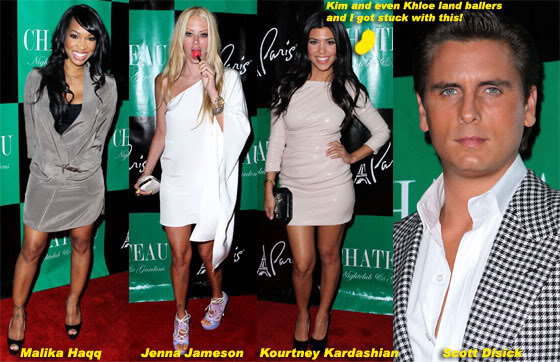Having been presented with that weekly conundrum unique to film critics (which new release do I actually want to see and write about?), I opted for the more buoyant choice in going to see DreamWorks Animation’s follow up to its 2008 smash, Kung Fu Panda (as opposed to Hangover 2, which I will catch during the weekend). If the many legions of Shrek admirers will forgive me for my insolence, I believe there is a rather compelling argument to be made that DreamWorks’s finest animated film to date is not Shrek or any of its middling sequels, but Kung Fu Panda. (Aside: How To Train Your Dragon was also pretty kick ass, and I will definitely see the sequel when it releases in 2014, right around the time Michelle Obama decides to run for President).
But back to Kung Fu Panda. The original film perhaps benefited from lowered expectations audiences and critics had going in: it was, after all, DreamWorks’s follow up to the imminently forgetful Shrek the Third and Bee Movie, only to be followed by the heinous disaster that was Monsters Vs. Aliens. Though the studio has intermittent successes, they certainly do not have the flawless track record of the Disney-Pixar repertoire, which is literally lined with a complete set of consecutive masterpieces. (Thank you, John Lasseter!)
Kung Fu Panda 2 picks up where the original left off, wherein kung fu neophyte master Po (Jack Black) finds himself taken with the story of his origins. He is, after all, a panda who was raised by a goose. Po is subject to flashes of his clouded past whenever he is confronted by the sign of the evil lord Shen, a deviant peacock voiced by Gary Oldman in a performance so deliciously evil I think it deserves an Oscar nomination (more on that later).
Shen was the heir to the dynasty that ruled over China, but when his emperor parents realized his malignant designs to bend China (and the world) to his will, he was banished from the kingdom forever. A soothsayer (voiced by Michelle Yeoh) prophesizes that Shen will be destroyed by a panda, his plans for domination inevitably thwarted by the innate power of kung fu. So what does Shen do after he is exiled? Well, he sort of subjects China’s Panda population to what can only be deemed genocide (yes, genocide) which forces Po’s desperate parents to abandon him with the hope that he might survive as the rest of the pandas are being hunted and killed, one by one. This part of the film recalled the genocidal capture of the unicorns in Rankin & Bass’s 1982 adaptation of Peter S. Beagle’s masterpiece The Last Unicorn, which in my opinion is quite possibly the greatest animated film ever made. But that’s another discussion…
All of this sounds very heavy handed (and it is), but rest assured that Kung Fu Panda 2 isn’t an allegory about the Holocaust. It is, rather, a very boisterous, amusing and awkwardly funny film that is almost as good as the original. I say ‘almost’ because the film seems to rely too heavily on its action sequences and not on the strength of the story telling which could have been obviously richer and deeper had the filmmakers had the courage to really go for the proverbial gold. Alas, they settled for a gold-tinted silver, wherein the lion’s share of the film’s most memorable moments belong almost exclusively to the brilliantly realized villain, Shen.
I’m not the first to say this and I certainly won’t be the last: Shen is the kind of villain who relishes his evil so much and with such elegant aplomb that you almost want him to win. If you’re especially into novelty, you will want him to win, so exquisite is his characterization. He is very much an avian cousin to The Lion King‘s Scar, arguably the most dastardly and distinguished villain in the entire Disney cannon whose deep seated bloodlust made Simba’s story so memorable and meaningful. Like Scar, Shen is erudite, sophisticated, elegant, introspective, refined, and above all, unapologetically evil — all with an impeccable British accent. It also helps that he is gifted with an aerodynamic design that allows him to move and maneuver like the wind, something that comes in handy in his many battle scenes against Po (and there are so many of them that he actually asks at one point, “How many times must I kill the same panda!” I lost track after a point, but it’s probably around seven.)
The film also manages to come up with some decidedly moving moments and montages, notably those involving Po’s back story and the last time he saw his mother. This series of sequences is especially remarkable because the design allows for a beautiful hybrid of computer and traditional 2-D animation (which, for animation buffs like myself, is a whole new thrill). The flashback sequences detailing the origin stories of both Po and Shen are reminiscent of the superbly animated Three Brothers sequence in Harry Potter and the Deathly Hallows — the figures emerge as shadow puppets, disjointed from the perfected finesse of the computer animation, lending these moments a decidedly high brow accent that the remainder of the film lacks. Sure, it’s all fun and fantastical, but these are moments of real art. As for the supporting cast, only Tigress (voiced by Angelina Jolie) has any real impact on the plot, relegating the rest of the supporting kung fu masters to glorified extra status.
In the end, I came out wanting to like the film more than I actually did. I liked it. A lot. But I didn’t love it as a whole, though there are some amazing moments of visual beauty and emotional power sprinkled throughout. But not to worry. I won’t give away the ending of the film, but rest assured, there will be a third Kung Fu Panda. As the ending indicates in none too subtle terms, Po’s story is not yet done.


